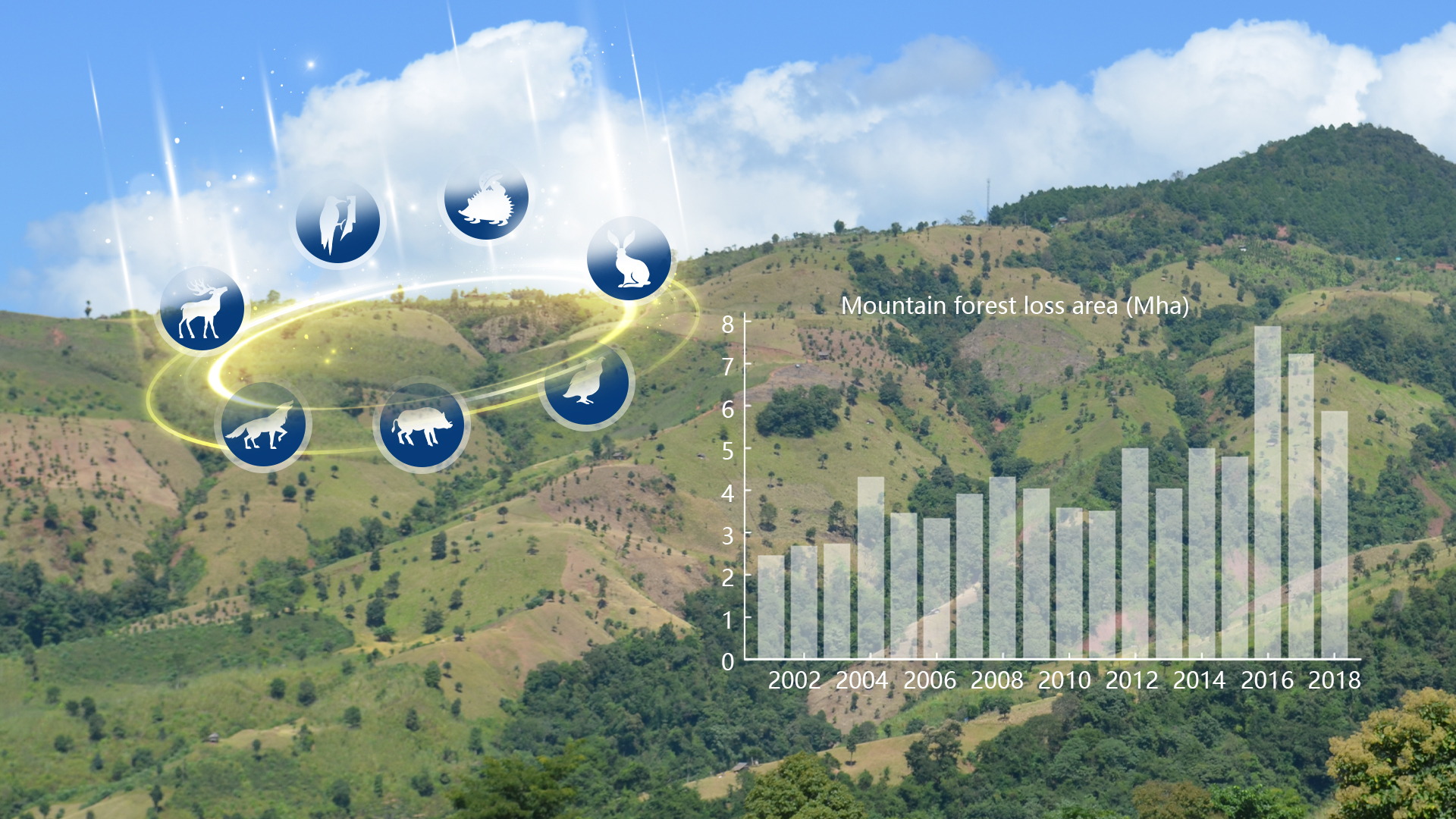Previously, forest loss primarily occurred in lowlands where forests are easy to access, and mountain areas had limited forest loss due to their rugged location. However, since the turn of the 21st century, mountain forests have been increasingly exploited as lowland areas become depleted or subject to protection.

Associate Professor Zhenzhong Zeng’s research team from the School of Environmental Science and Engineering at the Southern University of Science and Technology (SUSTech) has recently reported that forest loss across mountain regions is accelerating during the 21st century, with recent losses being 2.7-fold greater than those at the beginning of the century. Much of the loss occurred in tropical biodiversity hotspots, putting increasing pressure on threatened species.
Their research work, entitled “Accelerating global mountain forest loss threatens biodiversity hotspots,” has been published in One Earth, a journal that publishes significant original research that seeks to understand and address today’s environmental grand challenges.
The work uncovered global mountain forest loss patterns and drivers using multiple high-resolution satellite products of forest change and topography. “Globally, we have lost 78 million hectares (7.1%) of mountain forest since 2000—an area larger than the size of Qinghai Province,” the authors said. Logging was the biggest driver of mountain forest loss overall (42%), followed by wildfires (29%), shifting cultivation (15%), and commodity agriculture (10%), though the importance of these different factors varied from region to region.
The research team further found that tropical mountain forests experienced the most loss—42% of the global total—and the fastest acceleration rate. Worse, much of the loss overlaps with tropical biodiversity hotspots, which were dominated by various types of agriculture expansion. The study pointed out that efforts to curb the acceleration of mountain forest loss require regionally appropriate interventions. “In areas where shifting cultivation is a strong driver, efforts should be made to ensure agriculture does not impact frontier forests where possible. Whereas in regions where commodity production is more prevalent, increased commitment is needed urgently to halt commodity-driven forest loss and safeguard mountain forest biodiversity.”

Figure 1. The pattern of mountain forest loss in the 21st century. (a) Annual mountain forest loss in different continents. A symbol (+*) after the region shows a significant positive trend in mountain forest loss at the 95% confidence interval; (n.s.) means no significant trend in mountain forest loss. (b) Annual mountain forest loss in tropical (24°S to 24°N), boreal (≥50°N), and temperate (residual) regions. (c) Spatial pattern of total mountain forest loss area in 0.5° cells.
The authors also emphasized the importance of protected areas in preventing mountain forest loss, but they caution that this might not be sufficient to preserve threatened species. For sensitive species in biodiversity hotspots, the key issue is not only to simply limit forest loss across mountain regions, but to maintain the integrity of mountain forests to guarantee enough space for species to naturally move and migrate.

Figure 2. Elevational gradients of biodiversity value, protected area (PA) coverage, and mountain forest loss inside and outside of PAs within biodiversity hotspots. RSR (range-size rarity) is a biodiversity metric representing the endemicity.
Ph.D. student Xinyue He is the first author of this paper. Assoc. Prof. Zhenzhong Zeng is the corresponding author. SUSTech is the first correspondent of the paper.
Other researchers that contributed to the project included former Ph.D. student Yu Feng and master’s student Shijing Liang from SUSTech; Prof. Alan D. Ziegler from Mae Jo University (MJU); Dr. Paul R. Elsen from the Wildlife Conservation Society (WCS); and postdoctoral fellow Jessica C.A. Baker, Prof. Joseph Holden, and Prof. Dominick V. Spracklen from the University of Leeds.
This study was supported by the National Natural Science Foundation of China (NSFC) and SUSTech.
Paper link: https://doi.org/10.1016/j.oneear.2023.02.005
To read all stories about SUSTech science, subscribe to the monthly SUSTech Newsletter.
Proofread ByAdrian Cremin, Yingying XIA
Photo By